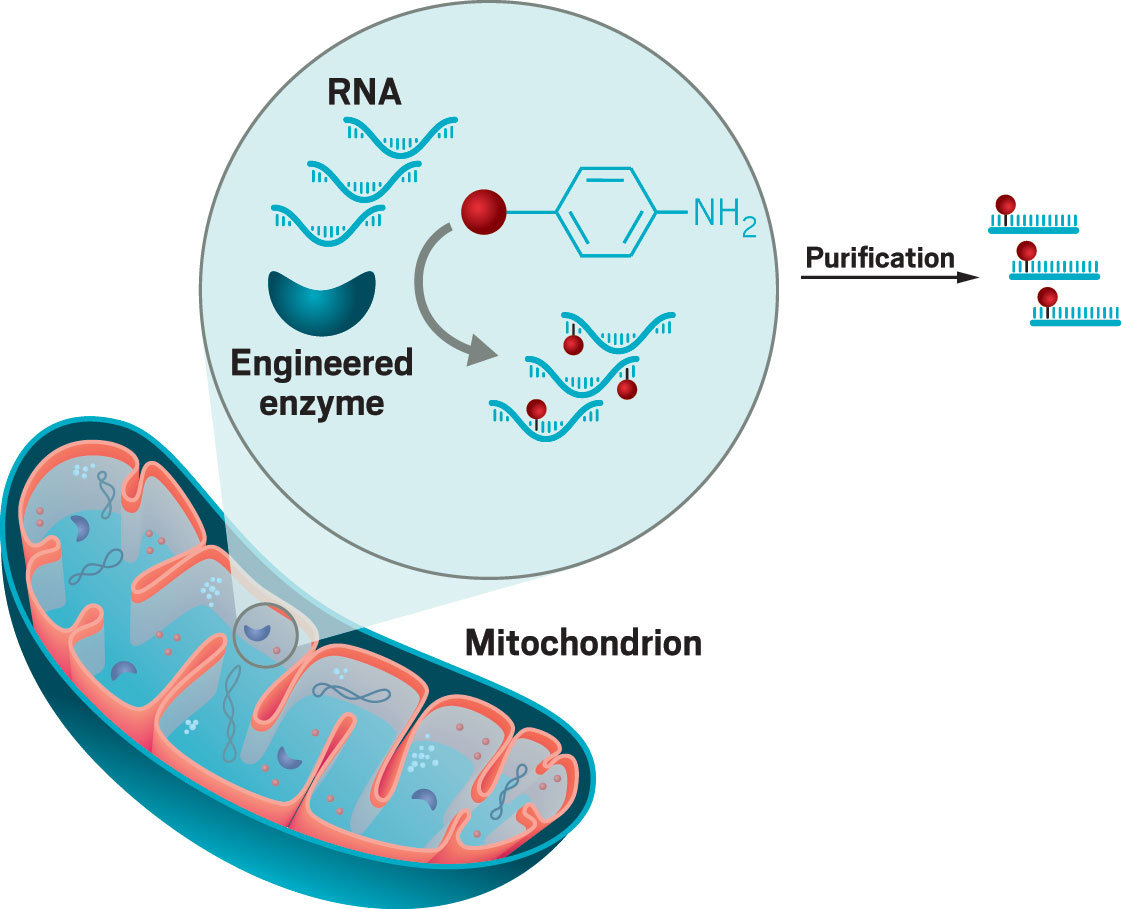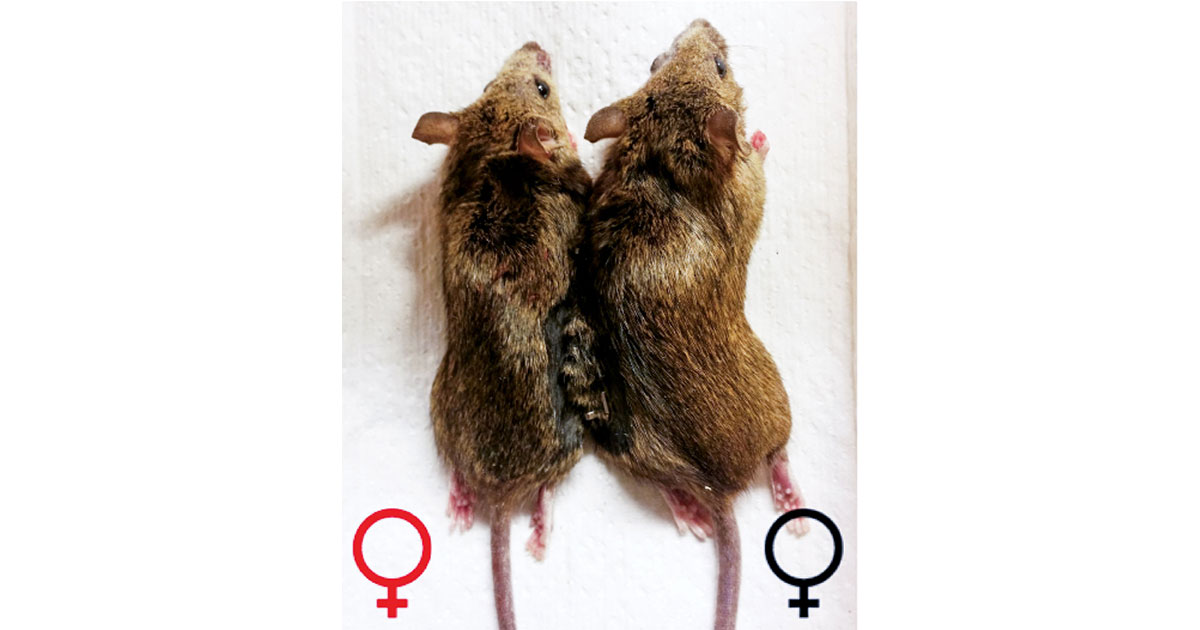Advertisement
Grab your lab coat. Let's get started
Welcome!
Welcome!
Create an account below to get 6 C&EN articles per month, receive newsletters and more - all free.
It seems this is your first time logging in online. Please enter the following information to continue.
As an ACS member you automatically get access to this site. All we need is few more details to create your reading experience.
Not you? Sign in with a different account.
Not you? Sign in with a different account.
ERROR 1
ERROR 1
ERROR 2
ERROR 2
ERROR 2
ERROR 2
ERROR 2
Password and Confirm password must match.
If you have an ACS member number, please enter it here so we can link this account to your membership. (optional)
ERROR 2
ACS values your privacy. By submitting your information, you are gaining access to C&EN and subscribing to our weekly newsletter. We use the information you provide to make your reading experience better, and we will never sell your data to third party members.
Neuroscience
Peng Zou
Cellular cartographer is mapping proteins and nucleic acids in action
by Laura Howes
August 25, 2019
| A version of this story appeared in
Volume 97, Issue 33


Vitals
Current affiliation: Peking University
Age: 34
PhD alma mater: Massachusetts Institute of Technology
Role model: “Roger Y. Tsien. He was an inspiring and creative scientist, and his work on calcium imaging and fluorescent proteins has revolutionized biological research.”
If I weren’t a chemist, I would be: “An astronomer perhaps. I enjoyed stargazing as a child and was deciding between studying chemistry and astronomy before entering college. I eventually chose chemistry because it offers the opportunity to do experiments rather than simply observing what is happening in nature.”
Must-have in the lab: “Our microscopes.”
Must-have on the road: “Universal multiplug adapter.”
3 key papers
“Hybrid Indicators for Fast and Sensitive Voltage Imaging” (Angew. Chem., Int. Ed. 2018, DOI: 10.1002/anie.201712614)
“Bright and Fast Multicoloured Voltage Reporters via Electrochromic FRET” (Nat. Commun. 2014, DOI: 10.1038/ncomms5625)
“Proteomic Mapping of Mitochondria in Living Cells via Spatially Restricted Enzymatic Tagging” (Science 2013, DOI: 10.1126/science.1230593)
For Peng Zou, the joy of science is in assembling puzzles. The chemist, based at Peking University, is developing tools to study biology in living systems, combining expertise from different fields to see how biomolecules are arranged in a cell. His goal is to understand how the chemistry happening inside cells can cause neurodegenerative diseases, like Alzheimer’s disease and amyotrophic lateral sclerosis.
“In biochemistry, we would usually like to take cells apart to understand them in chemical terms,” Zou says. “But to really understand how cellular functions arise from all these molecular components, we need to put everything back together in the cell.”
To do that, Zou’s lab is developing chemical reactions and custom-built microscopes and software to label relevant biomolecules and visualize signaling inside a live cell.
One challenge has been developing a way to tag individual cellular components in a small, precise area. To combat this issue, Zou and his lab use biology to help generate free radicals inside living cells. These reactive but short-lived free radicals allow him to tag molecules in just one part of the cell, leaving the rest of the cell untouched. The method lets Zou add spatial dimensions to high-throughput techniques like mass spectrometry or nucleic acid sequencing.
After first working on a technique for labeling proteins during his PhD, Zou recently extended the approach to also label nucleic acids. So far, he has demonstrated that the technique works by labeling mitochondrial RNA but says he will be doing more. Eventually Zou hopes to be able to stitch together a mosaic of snapshots in time and space to understand how proteins and nucleic acids assemble in the 3-D space of the cell and how their construction differs in a disease like Alzheimer’s. “We are trying to create a molecular map of the cell,” Zou says.
While Zou maps the complexity of a living cell, he jokes that a map of his own career moves would be rather simple. If you were to plot his journey, he says, “the graph would look a little bit boring because there are only two cities I’ve been to.”
For his PhD at the Massachusetts Institute of Technology, Zou trained in proteomics and imaging with Alice Ting, now at Stanford University. He then completed a postdoc with Adam Cohen at Harvard University, where he developed fluorescent reporters to make the voltages between neurons visible. In 2015, Zou moved back to Peking University to start his own group and study the chemical reactions that make the brain function.
His work is more than just a matter of curiosity. Understanding where and how proteins and nucleic acids are made inside a cell and how cells communicate could give researchers novel insights into the mechanisms of intractable diseases. Those insights could also potentially allow him to create models to screen for new drugs. Zou is collaborating with neurobiologists to apply his lab’s techniques to study several cell models of neurodegenerative diseases.
With his background and skills, Zou has made his own research niche, Ting says. By assembling expertise in techniques like molecular biology, omics, and optogenetics, she says, he’s “uniquely positioned to tackle the brain.”
For Peng Zou, the joy of science is in assembling puzzles. The chemist, based at Peking University, is developing tools to study biology in living systems, combining expertise from different fields to see how biomolecules are arranged in a cell. His goal is to understand how the chemistry happening inside cells can cause neurodegenerative diseases, like Alzheimer’s disease and amyotrophic lateral sclerosis.
“In biochemistry, we would usually like to take cells apart to understand them in chemical terms,” Zou says. “But to really understand how cellular functions arise from all these molecular components, we need to put everything back together in the cell.”
Advertisement
To do that, Zou’s lab is developing chemical reactions and custom-built microscopes and software to label relevant biomolecules and visualize signaling inside a live cell.
One challenge has been developing a way to tag individual cellular components in a small, precise area. To combat this issue, Zou and his lab use biology to help generate free radicals inside living cells. These reactive but short-lived free radicals allow him to tag molecules in just one part of the cell, leaving the rest of the cell untouched. The method lets Zou add spatial dimensions to high-throughput techniques like mass spectrometry or nucleic acid sequencing.
After first working on a technique for labeling proteins during his PhD, Zou recently extended the approach to also label nucleic acids. So far, he has demonstrated that the technique works by labeling mitochondrial RNA but says he will be doing more. Eventually Zou hopes to be able to stitch together a mosaic of snapshots in time and space to understand how proteins and nucleic acids assemble in the 3-D space of the cell and how their construction differs in a disease like Alzheimer’s. “We are trying to create a molecular map of the cell,” Zou says.
While Zou maps the complexity of a living cell, he jokes that a map of his own career moves would be rather simple. If you were to plot his journey, he says, “the graph would look a little bit boring because there are only two cities I’ve been to.”
For his PhD at the Massachusetts Institute of Technology, Zou trained in proteomics and imaging with Alice Ting, now at Stanford University. He then completed a postdoc with Adam Cohen at Harvard University, where he developed fluorescent reporters to make the voltages between neurons visible. In 2015, Zou moved back to Peking University to start his own group and study the chemical reactions that make the brain function.
His work is more than just a matter of curiosity. Understanding where and how proteins and nucleic acids are made inside a cell and how cells communicate could give researchers novel insights into the mechanisms of intractable diseases. Those insights could also potentially allow him to create models to screen for new drugs. Zou is collaborating with neurobiologists to apply his lab’s techniques to study several cell models of neurodegenerative diseases.
With his background and skills, Zou has made his own research niche, Ting says. By assembling expertise in techniques like molecular biology, omics, and optogenetics, she says, he’s “uniquely positioned to tackle the brain.”
Vitals
Current affiliation: Peking University
Age: 34
PhD alma mater: Massachusetts Institute of Technology
Role model: “Roger Y. Tsien. He was an inspiring and creative scientist, and his work on calcium imaging and fluorescent proteins has revolutionized biological research.”
If I weren’t a chemist, I would be: “An astronomer perhaps. I enjoyed stargazing as a child and was deciding between studying chemistry and astronomy before entering college. I eventually chose chemistry because it offers the opportunity to do experiments rather than simply observing what is happening in nature.”
Must-have in the lab: “Our microscopes.”
Must-have on the road: “Universal multiplug adapter.”
Research at a glance

Credit: Credit: Adapted from Angew. Chem., Int. Ed./Yang H. Ku/C&EN
To create a detailed map of a cell, Zou uses engineered enzymes to tag biomolecules like RNA in mitochondria with chemical probes (red). After purification to separate out the tagged molecules, he applies high-throughput techniques to glean information about what's happening in specific parts of a cell.
Three key papers
“Hybrid Indicators for Fast and Sensitive Voltage Imaging”
(Angew. Chem., Int. Ed. 2018, DOI: 10.1002/anie.201712614)



















Join the conversation
Contact the reporter
Submit a Letter to the Editor for publication
Engage with us on Twitter